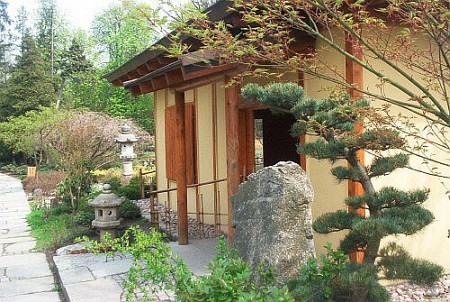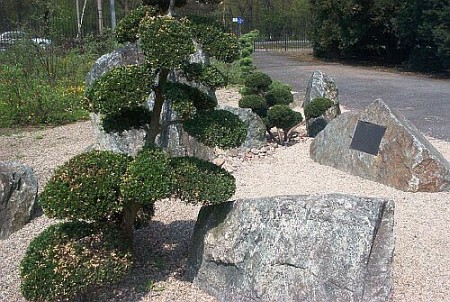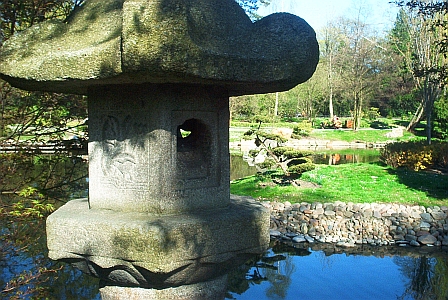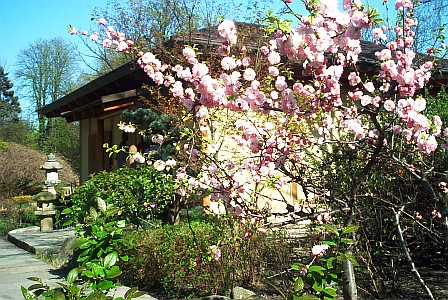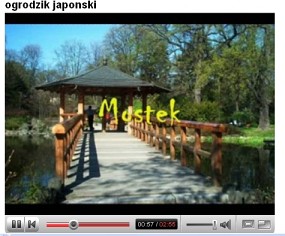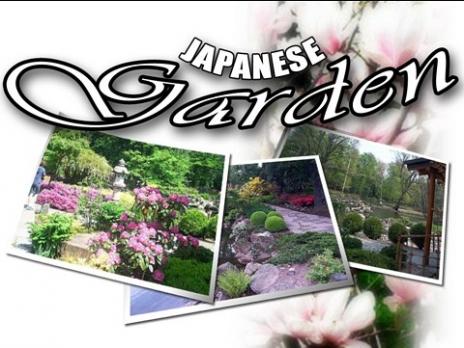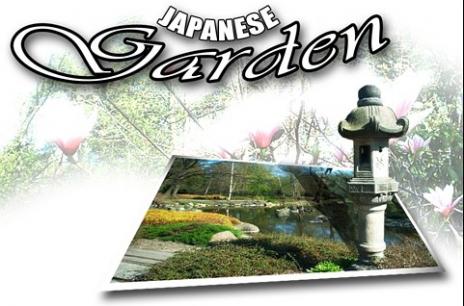Spring in Japanese Garden in Wroclaw/Poland :)
PhotoGallery and MOVIES
The Japanese Garden created as a part of the World Exhibition in 1913, with its present shape designed in cooperation with the Japanese Embassy and Japanese specialists from Nagoya.
Situated in Szczytnicki Park close to Hala Ludowa (Centenary Hall)
Gallery
http://www.youngdiplomats.zsei.info/photo/thumbnails.php?album=83
Movie
http://www.youtube.com/watch?v=ZboKLn_fxdg
******
HAKKOEN - or White and Red, is the name given in May 1997 to the Japanese Garden in Wroclaw, a reference to the national colours of Poland and Japan. The name also commemorates Polish-Japanese cooperation of the Garden.
In Japanese Garden in Wroclaw there are 15 species of trees and bushes that grow naturally only in Japan and a further 31 species of East Asian and Japanese origin.
You can meet there:
Main gate – SUKYA-MON
Stone latern – TOURU MICHISHIRUBE
Stone waterbowl – TSUKUBAI
Female cascade – ONNA-DAKI
Male cascade – OTOKO-DAKI
Waiting shelter – MACHAI
Tea house – AZUMAYA
Small stone lantern – TOUROU KYOTO
Stone lantern – KASUGA
Stone beach – SUCHAMA
Bridge with viewing pavilion – YUMEDONO BASHI
Stone tower – SANIU-NO-TO
Arched bridge – TAIKO BASHI
Side gate – KABUKI-MON
Rock arrangement – IWAGUMI
19th-century stone lanterns – TOUROU TAIKOU
Well – IZUTSU
Stone harbour – FUNATSUKI
**** a few symbols
* evergreens, symbolizing its everlasting peace
1. The gate and the authentic Japanese fencing symbolize the entrance to paradise
2. Directly behing the gate, on the left, is a TSUKUBAI stone waterbowl. This is where by a symbolic washing of hand, one leaves behind the early problems and concern so as to enter the paradise garden clean and free from evil thoughts.
3. A walk along the stone paths, TOBIISHI, leading to the various parts of the garden, is conductive to contemplation of landscape and meditation and is intended to purify the mind.
4. In the northern part of the garden a stream springs from a hill and flows to the pond, which symbolizes the sea. This is a female stream, ONNA-DAKI
5. On the north-western side there is a waiting shelter, MACHAI, and another TSUKUBAI (stone waterbowl). This is where guests wait for the tea drinking ceremony and wash their hands again.
6. On an island there is stone tower, SANJU-NO-TO. The wooden arched bridge, TAIKO BASHI, symbolizes the difficult and demanding road to paradise.
Gallery
http://www.youngdiplomats.zsei.info/photo/thumbnails.php?album=83
Movie
http://www.youtube.com/watch?v=ZboKLn_fxdg
******
HAKKOEN - or White and Red, is the name given in May 1997 to the Japanese Garden in Wroclaw, a reference to the national colours of Poland and Japan. The name also commemorates Polish-Japanese cooperation of the Garden.
In Japanese Garden in Wroclaw there are 15 species of trees and bushes that grow naturally only in Japan and a further 31 species of East Asian and Japanese origin.
You can meet there:
Main gate – SUKYA-MON
Stone latern – TOURU MICHISHIRUBE
Stone waterbowl – TSUKUBAI
Female cascade – ONNA-DAKI
Male cascade – OTOKO-DAKI
Waiting shelter – MACHAI
Tea house – AZUMAYA
Small stone lantern – TOUROU KYOTO
Stone lantern – KASUGA
Stone beach – SUCHAMA
Bridge with viewing pavilion – YUMEDONO BASHI
Stone tower – SANIU-NO-TO
Arched bridge – TAIKO BASHI
Side gate – KABUKI-MON
Rock arrangement – IWAGUMI
19th-century stone lanterns – TOUROU TAIKOU
Well – IZUTSU
Stone harbour – FUNATSUKI
**** a few symbols
* evergreens, symbolizing its everlasting peace
1. The gate and the authentic Japanese fencing symbolize the entrance to paradise
2. Directly behing the gate, on the left, is a TSUKUBAI stone waterbowl. This is where by a symbolic washing of hand, one leaves behind the early problems and concern so as to enter the paradise garden clean and free from evil thoughts.
3. A walk along the stone paths, TOBIISHI, leading to the various parts of the garden, is conductive to contemplation of landscape and meditation and is intended to purify the mind.
4. In the northern part of the garden a stream springs from a hill and flows to the pond, which symbolizes the sea. This is a female stream, ONNA-DAKI
5. On the north-western side there is a waiting shelter, MACHAI, and another TSUKUBAI (stone waterbowl). This is where guests wait for the tea drinking ceremony and wash their hands again.
6. On an island there is stone tower, SANJU-NO-TO. The wooden arched bridge, TAIKO BASHI, symbolizes the difficult and demanding road to paradise.
Bonsai
Lights (toro, kasuga)
Spring in Japanese Garden in Wroclaw/Poland - April 2007..
MOVIES..
Students from AP Edukacja prepared movies based on our PhotoGallery
1. Adrian Sliwinski
http://youtube.com/watch?v=_1XzO2DcEqc
2. Pawel Pyrda
http://www.youtube.com/watch?v=fKCdCRNRN4w
3. Alicja Wolek
http://www.youtube.com/watch?v=T2Vj4Joaypo
1. Adrian Sliwinski
http://youtube.com/watch?v=_1XzO2DcEqc
2. Pawel Pyrda
http://www.youtube.com/watch?v=fKCdCRNRN4w
3. Alicja Wolek
http://www.youtube.com/watch?v=T2Vj4Joaypo
Graphics..
Artistic presentation made by student of AP Edukacja
Wojciech Draganczuk
Wojciech Draganczuk
